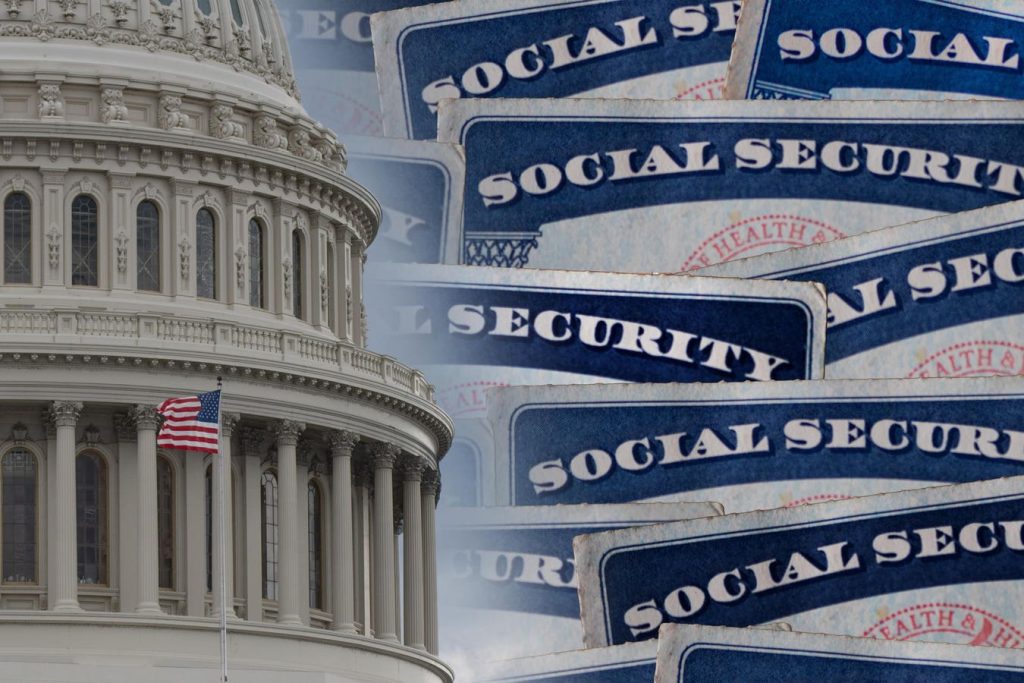If you keep an eye on the news, you might have read or heard scary headlines that the Social Security Trust Funds are projected to be exhausted in the year 2034, with the conclusion that Social Security will soon be bankrupt. While the first part of this sentence is true, the conclusion in the second part is not. Under current law, Social Security will never completely run out of money and will never be bankrupt.
To learn why, let’s dig into the details.
Will Social Security Ever Completely Run Out Of Money?
Regarding the question whether Social Security will ever completely run out of money, “no” is the short answer—as long as current law is in effect. The reason is that Social Security’s benefits are funded by two sources:
- FICA taxes paid by workers and their employers that participate in Social Security, and
- The Social Security Trust Funds
As long as workers and their employers are paying FICA taxes, there will always be a source of money to pay benefits for retirees and beneficiaries. That’s the reason Social Security will never completely run out of money and will never be bankrupt.
However, the Trust Funds are projected to run out of money in the near future, so it’s possible that funding source could become unavailable.
What Are Projected Timelines For Social Security Trust Funds Running Out Of Money?
The 2023 Social Security Trustees Report projects that the Old Age and Survivor’s Insurance (OASI) Trust Fund can pay 100% of scheduled retirement and survivor benefits until the year 2033. In that year, the fund is projected to be depleted. If Congress doesn’t act to shore up the system’s finances, then the only source of Social Security funding at that time would be FICA taxes paid by workers and their employers. In this case, the FICA taxes would be able to pay about 77% of scheduled benefits.
While reducing retirees’ retirement benefits by 23% would definitely be bad news, retirees and beneficiaries would not receive nothing, as some scary headlines might have you believe.
Similarly, the Disability Insurance (DI) Trust Fund is projected to pay scheduled disability benefits until the year 2097. If the OASI and DI Funds are considered together, then the combined funds would be depleted in 2034, at which time they still be able to pay about 80% of scheduled retirement and disability benefits.
When Would Be The Earliest — And Latest — Years That The Trust Funds Run Out?
To understand the earliest and latest years that the Trust Funds could be entirely depleted, you’ll need to understand how the actuaries at Social Security prepare their projections. They make various assumptions regarding the operation of the program over the next 75 years, including assumptions about future inflation, productivity improvements, unemployment rates, pay increases, interest rates, death and disability rates among workers, death rates for retirees, the number of children who are born (and who will pay FICA taxes in the future), and immigration.
If you think that the actuaries don’t have a crystal ball that allows them to precisely predict the future for 75 years, you’d be right! To address this predictable uncertainty, the actuaries prepare estimates using three sets of assumptions:
- “Intermediate,” representing assumptions that are their best estimate
- “Low-cost,” representing optimistic assumptions
- “High-cost,” representing pessimistic assumptions
The numbers reported above regarding when the Trust Funds are projected to be depleted were prepared using the intermediate, best-estimate assumptions.
That being said, to estimate the earliest year that the Trust Funds could be depleted, you’d use the high-cost, pessimistic assumptions. In this case, the combined OASI and DI Trust Funds are projected to be depleted in the year 2031.
To estimate the year furthest in the future that the Trust Funds could be depleted, you’d use the low-cost, optimistic assumptions. In this case, the combined OASI and DI Trust Funds are projected to be depleted in the year 2067.
Who Would Be Most Affected By The Lack Of Funds?
Virtually all retirees, survivors, and beneficiaries who receive or will receive benefits that would be reduced due to Congressional inaction would be negatively affected if their benefits are reduced by 20% or more. That’s a lot of people: Currently, more than 66 million people receive benefits from Social Security.
People impacted the most would be low-income retirees and beneficiaries who receive most, if not all, of their income from Social Security. For example, one study from Social Security shows that about half of all retirees and beneficiaries receive at least half of their total income from Social Security. That would mean that more than 30 million retires and beneficiaries would be significantly hurt by a future benefits reduction.
Predictably, Republican lawmakers want to balance Social Security’s finances with future benefit reductions, while Democratic lawmakers want to balance the finances with future tax increases. Both sides seem to be dug into their positions.
We need our lawmakers to prioritize the sustainability of Social Security by conducting informed negotiations and making the necessary compromises that will shore up Social Security’s finances for the foreseeable future.
Read the full article here




